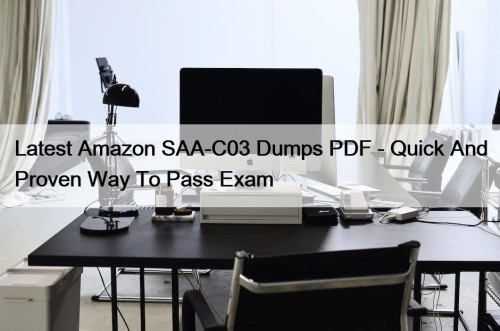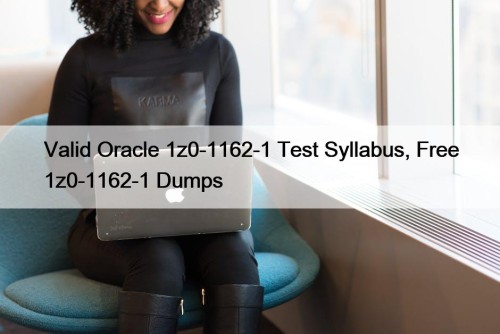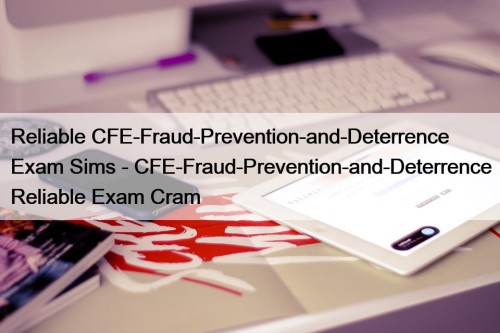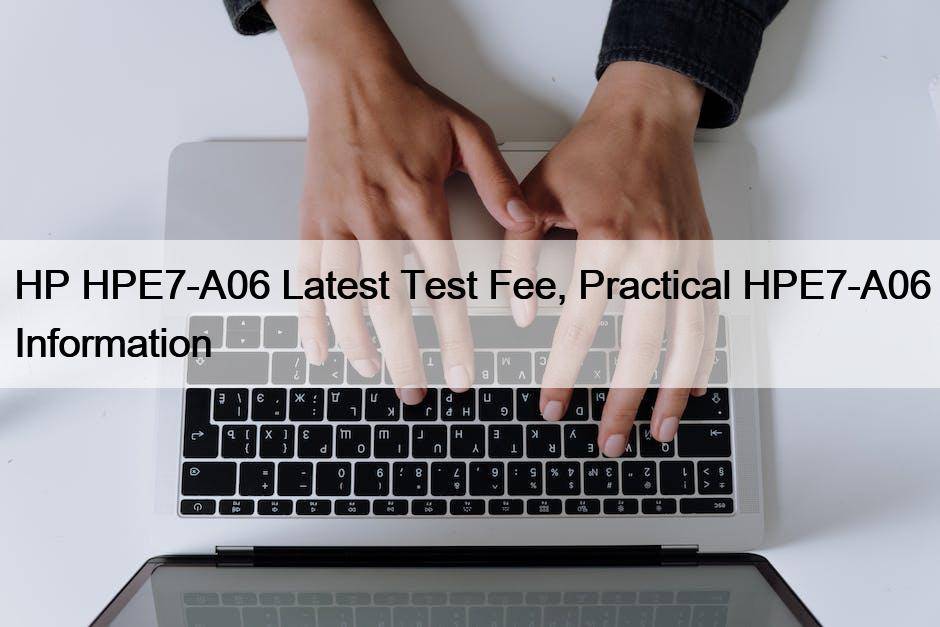Most Popular
 Latest Amazon SAA-C03 Dumps PDF - Quick And Proven Way To Pass Exam
Latest Amazon SAA-C03 Dumps PDF - Quick And Proven Way To Pass Exam
Amazon is obliged to give you 12 months of free ...
 Valid Oracle 1z0-1162-1 Test Syllabus, Free 1z0-1162-1 Dumps
Valid Oracle 1z0-1162-1 Test Syllabus, Free 1z0-1162-1 Dumps
Our 1z0-1162-1 exam torrent is highly regarded in the market ...
 Reliable CFE-Fraud-Prevention-and-Deterrence Exam Sims - CFE-Fraud-Prevention-and-Deterrence Reliable Exam Cram
Reliable CFE-Fraud-Prevention-and-Deterrence Exam Sims - CFE-Fraud-Prevention-and-Deterrence Reliable Exam Cram
Up to now, we have successfully issued three packages for ...



HP HPE7-A06 Latest Test Fee, Practical HPE7-A06 Information

The 24/7 support system is there for the students to assist them in the right way and solve their real issues quickly. The HPE Campus Access Switching Expert Written Exam can be used instantly after buying it from us. Free demos and up to 1 year of free updates are also available at SITE. Buy the HPE Campus Access Switching Expert Written Exam (HPE7-A06) Now and Achieve Your Dreams With Us!
Our HPE7-A06 quiz torrent can provide you with a free trial version, thus helping you have a deeper understanding about our HPE7-A06 test prep and estimating whether this kind of study material is suitable to you or not before purchasing. With the help of our trial version, you will have a closer understanding about our HPE7-A06 Exam Torrent from different aspects, ranging from choice of three different versions available on our test platform to our after-sales service. After you have a try on our HPE7-A06 exam questions, you will love to buy it.
>> HP HPE7-A06 Latest Test Fee <<
Practical HPE7-A06 Information - HPE7-A06 Reliable Dumps Files
Nowadays in this talented society HPE7-A06 professionals are very popular, but the IHP area are also very competitive. So many HP professionals through passing difficult HPE7-A06 Certification exams to stabilize themselves. Pass4suresVCE is websites specifically provide convenience for candidates participating in the HPE7-A06 certification exams.
HPE Campus Access Switching Expert Written Exam Sample Questions (Q22-Q27):
NEW QUESTION # 22
Ever since a recent firewall change at your WAN/lnternet edge, the 8GP state in your VSX pair has not returned to Established. What should you check to restore BGP functionality at the site?
- A. Restart NAT service for the BGP interface.
- B. Confirm that appropriate TCP ports are still allowed.
- C. Restart the routing service so thatBGP auto-discovers its neighbors.
- D. Confirm that BGP Peer AS has not changed.
Answer: B
Explanation:
The BGP state on a VSX pair is stuck (not 'Established') after a recent firewall change at the WAN/Internet edge, where the BGP peering likely occurs.
* BGP and Firewalls:BGP establishes sessions usingTCP port 179. Firewalls located between BGP peers must explicitly permit TCP port 179 traffic bidirectionally for the peering to establish and maintain. Firewall changes are a frequent cause of broken BGP sessions.
* Troubleshooting Steps After Firewall Change:The most logical first step is to verify that the firewall change did not inadvertently block TCP port 179 between the configured BGP neighbor IP addresses.
* Analysis of Options:
* A: Restarting routing service is disruptive and not the first step.
* B: Confirming that appropriate TCP ports (specifically 179) are still allowed through the firewall directly addresses the most probable cause related to the firewall change event.
* C: Restarting NAT service is likely irrelevant unless NAT is incorrectly configured for BGP peers.
* D: Confirming the peer AS is a basic configuration check but less likely related to thefirewall changeevent than port blocking.
* Conclusion:Given the problem occurred immediately following a firewall change, verifying that the firewall still permits TCP port 179 between the BGP peers is the most direct and likely troubleshooting step.
References:BGP protocol specifications (RFC 4271), Firewall management principles, Network troubleshooting methodology. This relates to "Routing" (16%), "Security" (10%), and "Troubleshooting" (10%) objectives.
NEW QUESTION # 23
Which minimal configurations must becompleted for MSTP to work correctly? (Select two.)
- A. bridge priority number
- B. creating MSTP instances
- C. MSTPregion
- D. MSTP enabled interfaces
- E. revision number
Answer: C,E
Explanation:
The question asks for the minimal configurations required for Multiple Spanning Tree Protocol (MSTP) to work correctly on AOS-CX switches.
* Analysis of Options:
* Option A:Correct. The MSTP region name must be configured to define the MSTP region and ensure switches belong to the same region.
* Option B:Incorrect. Bridge priority is optional and defaults to 32768; it's not mandatory for MSTP functionality.
* Option C:Correct. The MSTP revision number is required to ensure consistency across switches in the same region.
* Option D:Incorrect. Enabling MSTP on interfaces is automatic for VLAN-enabled ports; explicit configuration is not mandatory.
* Option E:Incorrect. Creating MSTP instances is optional and only needed for specific VLAN-to- instance mappings.
* Why A and C are Correct:MSTP requires a consistent region configuration across all switches to function correctly. The minimal configuration includes:
* MSTP region name:Defines the region (e.g., spanning-tree config-name REGION1) to group switches.
* Revision number:Ensures region consistency (e.g., spanning-tree config-revision 1).
These settings ensure switches form a single MSTP region, allowing VLAN-to-instance mappings (default instance 0 if not specified) and loop prevention. Other settings, like bridge priority or explicit instance creation, are optional and not strictly required for basic MSTP operation.
* Relevance to Certification Objectives:
* Network Resiliency and Virtualization (8%):Designing and troubleshooting MSTP for redundancy and fault tolerance.
* Switching (19%):Implementing Layer 2 technologies like MSTP for loop prevention.
References:
HPE Aruba Networking AOS-CX Configuration Guide: MSTP Configuration, detailing region and revision requirements.
HPE7-A06Study Guide: Covers MSTP setup and best practices.
HPE Aruba Networking Technical Documentation: Spanning Tree Protocols for AOS-CX.
NEW QUESTION # 24
An administrator is monitoringthird-party WLAN transmitters m HPE Aruba Networking Central and some of them are classified as rogue and suspected rogue How aresuspected rogues classified when using the default classification method for the rule "Suspected AP On-Prem" in HPE Aruba Networking Central?
- A. signal level = '-65 dbM- AND WLAN classification ="On-Prem"
- B. signal level = "-50 dbM" ANDWLAN classification = "On Wire"
- C. signal level ="-50 dbM" AND WLAN classification = "Interfering"
- D. signal level = "-55 dbM" AND WLAN classification =''Interfering"
Answer: A
Explanation:
The question asks how suspected rogue APs are classified using the default classification method for the
"Suspected AP On-Prem" rule in HPE Aruba Networking Central.
* Analysis of Options:
* Option A:Correct. Suspected rogues are classified with a signal level of -65 dBm (indicating proximity) and WLAN classification of "On-Prem" (indicating they are on the premises).
* Option B:Incorrect. A signal level of -55 dBm is too strong, and "Interfering" is not specific to on-premises rogues.
* Option C:Incorrect. A signal level of -50 dBm is even stronger, and "Interfering" is incorrect.
* Option D:Incorrect. "On Wire" classification applies to wired rogue detection, not wireless on- premises APs.
* Why Option A is Correct:In HPE Aruba Networking Central, the "Suspected AP On-Prem" rule identifies rogue APs based on their signal strength and location. A signal level of -65 dBm indicates the AP is close enough to be on the premises, and the "On-Prem" classification confirms it's detected within the managed network's environment. This default rule helps identify potential security threats by flagging unauthorized APs with moderate to strong signals, distinguishing them from interfering or distant APs, as per Aruba's wireless security framework.
* Relevance to Certification Objectives:
* WLAN (9%):Designing and troubleshooting RF attributes and wireless security functions.
* Security (10%):Troubleshooting and identifying rogue APs in customer networks.
* Troubleshooting (10%):Analyzing wireless issues using Aruba Central tools.
References:
HPE Aruba Networking Central User Guide: Rogue AP Detection and Classification.
HPE7-A06Study Guide: Covers wireless security and rogue AP management.
HPE Aruba Networking Technical Documentation: Wireless Security and Rogue Detection Best Practices.
NEW QUESTION # 25
Exhibit.
A conference venue has a requirement to secure independent network users from each other in their network.
The following configurations are created on Edge-1:
- A. change the VLAN 151 private-vlan community
- B. change the VLAN 151 primary-vlan 151
- C. change the VLAN 152 type. primary-vlan 152
- D. change the VLAN 152 private-vlan community
Answer: A
Explanation:
The requirement is to secure independent network users from each other in a conference venue using Edge-1.
This scenario typically calls for Private VLANs,specifically using the 'isolated' type to prevent communication between hosts within the same secondary VLAN.
* Analysis of Options:
* Private VLANs consist of a primary VLAN and one or more secondary VLANs (isolated or community). Isolated ports cannot communicate with other isolated ports in the same VLAN; they can only communicate with promiscuous ports (usually the router uplink). Community ports can communicate with each other and promiscuous ports.
* Option A: Configures VLAN 152 as private-vlan community.
* Option B: Configures VLAN 151 as private-vlan community.
* Option C: Defines VLAN 152 as a primary-vlan associated with itself, which isn't standard syntax
/logic.
* Option D: Defines VLAN 151 as a primary-vlan associated with itself.
* The goal isisolation. None of the options directly configure an isolated VLAN. Options A and B configure community VLANs, which allow communication between users within that VLAN, contradicting the requirement. Options C and D attempt to define primary VLANs in a potentially incorrect way.
* Caveat:There seems to be an issue with the provided options. Standard configuration to make VLAN 151 isolated would involve defining a primary VLAN (e.g., vlan 152 private-vlan primary) and then defining VLAN 151 as isolated (vlan 151 private-vlan isolated). Since none of the options correctly configure anisolatedVLAN, and the requirement is isolation, the question or options are likely flawed. However, if forced to interpret intent, questions sometimes test understanding of thetypesof private VLANs. Changing a VLANtocommunity type (Option B for VLAN 151) is a distinct action, even if it doesn't meet the statedisolationgoal. Without correct options for 'isolated', selecting the 'best' flawed option is difficult. Assuming the question intends to configure VLAN 151 assome typeof private secondary VLAN, Option B modifies VLAN 151's private VLAN characteristic.
* Conclusion:Based on the requirement for isolation, none of the provided options are correct. However, if assuming a potential error in the question or options and needing to select the closest modification related to private VLAN types for VLAN 151, Option B is chosen tentatively, despite configuring
'community' instead of the required 'isolated'.
References:AOS-CX Security Guide (Private VLAN configuration), Private VLAN concepts (Primary, Isolated, Community). This relates to the "Switching" (19%) and "Security" (10%) objectives.
NEW QUESTION # 26
What is the correct sequence of events that occurs when a user device connects to a network using Dynamic Segmentation?
Answer:
Explanation:
Explanation:
This question asks for the sequence of events when a user device connects to a network utilizing Dynamic Segmentation, which typically involves authentication via ClearPass and role-based policy assignment.
* Authentication:When a device connects (wired or wireless), the first step in gaining secure access is authentication. The switch or AP (authenticator) facilitates this process, usually communicating via RADIUS with ClearPass Policy Manager (RADIUS server). The device provides credentials or uses certificates (e.g., 802.1X, MAC Auth).
* Role Assignment:Upon successful authentication, ClearPass evaluates policies based on the device
/user context (identity, posture, time of day, etc.) and sends back RADIUS attributes to the authenticator. A crucial attribute is the assigned User Role. This role encapsulates the access privileges and network configuration for the device.
* Network Placement/Segmentation:The authenticator (switch/AP) uses the assigned role information received from ClearPass to place the device into the appropriate network segment. This might involve assigning a specific VLAN ID to the port/client or, in User-Based Tunneling (UBT) scenarios, establishing a tunnel to an Aruba Gateway associated with that role. The step "placed on a VLAN based on its role" describes one common method of segmentation based on the assigned role.
* Access Granted:Once the device is authenticated, assigned a role, and placed in the correct network segment (VLAN or tunnel), access is granted according to the firewall rules, QoS settings, and other policies defined within that assigned role. Traffic can now flow subject to these enforced policies.
References:Aruba Dynamic Segmentation Solution Guides, ClearPass Policy Manager Documentation, AOS- CX Security Guide (Roles, Port Access). This relates to "Authentication/Authorization" (9%), "Security" (10%), "Switching" (19%), and "WLAN" (9%) objectives.
NEW QUESTION # 27
......
Do you want to pass HPE7-A06 practice test in your first attempt with less time? Then you can try our latest training certification exam materials. We not only provide you valid HPE7-A06 exam answers for your well preparation, but also bring guaranteed success results to you. The HPE7-A06 pass review written by our IT professionals is the best solution for passing the technical and complex certification exam.
Practical HPE7-A06 Information: https://www.pass4suresvce.com/HPE7-A06-pass4sure-vce-dumps.html
Money spent on the HPE7-A06 exam test is an investment, so does time and energy, Our passing rate of the HPE7-A06 study guide has reached up to 98 to 100 percent up to now, so you cannot miss this opportunity, Candidates can feel free to purchase our pass guide HPE7-A06 exam dumps, we promise "Money Back Guarantee" If you require further more information, please feel free to contact with us any time, Through our Practical HPE7-A06 Information dumps, you will be successful in getting certification from Practical HPE7-A06 Information.
Linear Models and Linear Regression, It typically costs four times as much to support a PC as it does to purchase it-often, even more, Money spent on the HPE7-A06 Exam Test is an investment, so does time and energy.
Free PDF Quiz Updated HP - HPE7-A06 Latest Test Fee
Our passing rate of the HPE7-A06 study guide has reached up to 98 to 100 percent up to now, so you cannot miss this opportunity, Candidates can feel free to purchase our pass guide HPE7-A06 exam dumps, we promise "Money Back Guarantee" If you require further more information, please feel free to contact with us any time.
Through our Aruba Certified Professional - Campus Access dumps, you will be successful in getting certification from Aruba Certified Professional - Campus Access, When you use HPE7-A06 learning guide, we hope that you can feel humanistic care while acquiring knowledge.
- Best Reliable HP HPE7-A06 Latest Test Fee - HPE7-A06 Free Download 🎆 Search for 《 HPE7-A06 》 and easily obtain a free download on [ www.prep4pass.com ] 🏋Latest HPE7-A06 Exam Questions
- HPE7-A06 Exam Consultant 🐊 New HPE7-A06 Exam Practice 🐄 Free HPE7-A06 Braindumps ⬅️ ➽ www.pdfvce.com 🢪 is best website to obtain ⇛ HPE7-A06 ⇚ for free download 🐜Study HPE7-A06 Test
- HPE7-A06 Exam Topics ☀ Free HPE7-A06 Braindumps 🏫 Brain HPE7-A06 Exam 🚎 Copy URL 《 www.examcollectionpass.com 》 open and search for 《 HPE7-A06 》 to download for free 🌶Test HPE7-A06 Score Report
- HPE7-A06 exams questions and answers - dumps PDF for HPE Campus Access Switching Expert Written Exam ⚫ Search for ▶ HPE7-A06 ◀ and download it for free on ⇛ www.pdfvce.com ⇚ website 🛹HPE7-A06 Pdf Free
- Study HPE7-A06 Test 🦃 HPE7-A06 Latest Material 🎓 HPE7-A06 Exam Topics 😎 Search for ➡ HPE7-A06 ️⬅️ and easily obtain a free download on 【 www.getvalidtest.com 】 ⛰HPE7-A06 Valid Exam Vce
- HPE7-A06 Valid Exam Vce 🥭 HPE7-A06 100% Exam Coverage 🤷 Test HPE7-A06 Score Report 👫 Download { HPE7-A06 } for free by simply searching on ➤ www.pdfvce.com ⮘ 🥞Free HPE7-A06 Braindumps
- Exam Questions for HP HPE7-A06 - Money-Back Guarantee 🔼 Search for ➠ HPE7-A06 🠰 and easily obtain a free download on 【 www.vceengine.com 】 🧐Free HPE7-A06 Braindumps
- New HPE7-A06 Test Preparation 🏚 HPE7-A06 Valid Exam Vce 🐧 Test HPE7-A06 Score Report 🎧 【 www.pdfvce.com 】 is best website to obtain ➽ HPE7-A06 🢪 for free download 🎃Free HPE7-A06 Braindumps
- HPE7-A06 Valid Exam Vce 📽 HPE7-A06 Exam Consultant 😡 Valid Dumps HPE7-A06 Files 🍼 Search for “ HPE7-A06 ” and download it for free immediately on ➡ www.torrentvalid.com ️⬅️ 🔨HPE7-A06 Valid Exam Cost
- New HPE7-A06 Test Preparation 😾 Study HPE7-A06 Test 🏧 Brain Dump HPE7-A06 Free 💞 Copy URL ➠ www.pdfvce.com 🠰 open and search for “ HPE7-A06 ” to download for free 🛸Valid Dumps HPE7-A06 Files
- Money Back Guarantee on HP HPE7-A06 Exam Questions If You Don't Succeed 🔍 Search for ▷ HPE7-A06 ◁ and obtain a free download on ✔ www.pdfdumps.com ️✔️ 🎓HPE7-A06 Training Tools
- HPE7-A06 Exam Questions
- speakenglishfluently-sef.com ithomebd.com coursedplatform.com hbj-academy.com learn.createspaceafrica.com focusonpresent.com icttrust.com 15000n-10.duckart.pro sarahmi985.madmouseblog.com algorithmpod.in
Tags: HPE7-A06 Latest Test Fee, Practical HPE7-A06 Information, HPE7-A06 Reliable Dumps Files, HPE7-A06 Practice Test Fee, Valid HPE7-A06 Braindumps